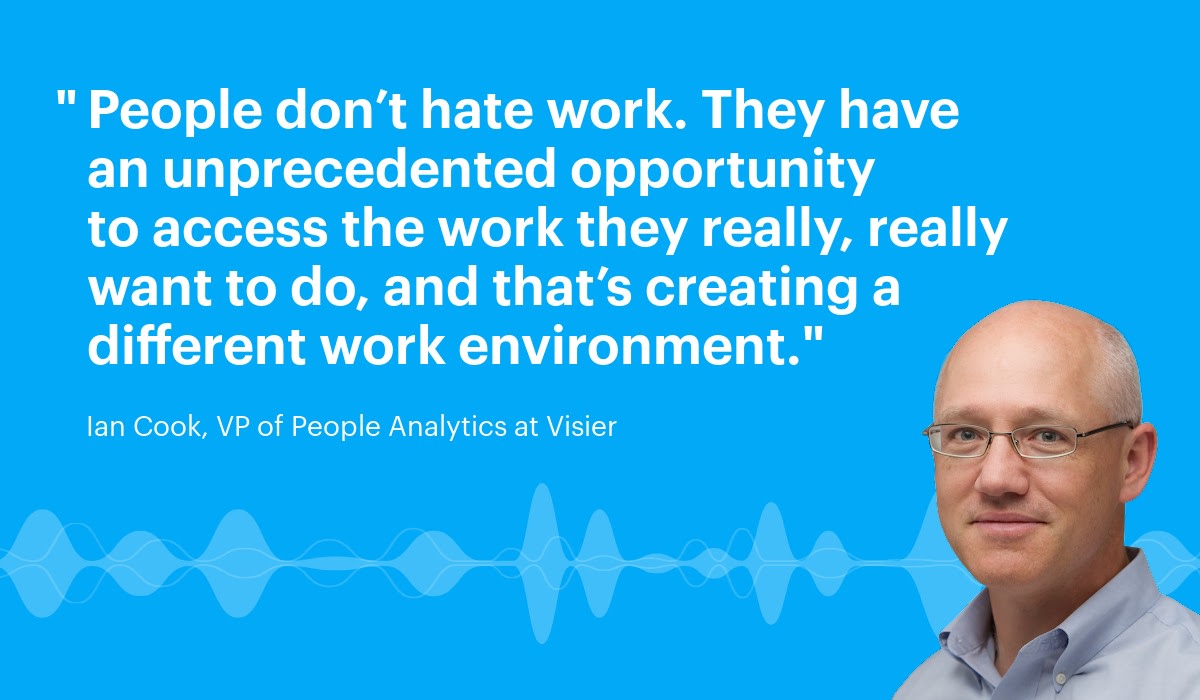The Job Quitters Want To Work—Just Not for You
Job quitters aren’t leaving the labor market outright. They’re quitting to take other opportunities. Read why job hopping is becoming more common.

With the Great Resignation showing no signs of slowing, data suggests that COVID-era American workers aren’t quitting the labor market outright—people are quitting to take other opportunities.
On the first episode of The Human Truth Podcast, we discussed a statistic from The Atlantic that 84% of workers report that they’re either satisfied or very satisfied with work. Contrasted with the pervasive myth that “no one wants to work” and the staggering numbers of workers quitting their jobs, this stat is contradictory. However, while job hopping was once viewed as showing a lack of commitment to a company or project, workers are finding that there are, in fact, good reasons to leave a job, even one you’re happy with.
Is “The Great Resignation” a misnomer?
The Covid-19 pandemic ushered in a new way of working for many Americans. These new ways were adopted as a matter of public safety, but they may have been overdue as far as updating obsolete working conditions. While there certainly was some collective fear around job security at the start of the lockdowns, rather than seeing people clutching onto their employment, we saw a record number of Americans quit their jobs.
As it turned out, the Great Resignation was less about people leaving the job market altogether, and more about people moving from one job to another.
According to data from the U.S. Bureau of Labor Statistics, 47.8 million Americans quit their jobs in 2021, and while the pandemic-era restrictions have eased in recent months, the Great Resignation is still in full swing. A record 4.5 million workers quit their jobs in November of last year, but more recent months weren’t too far behind that. January 2022 saw 4.3 million people quit, and another 4.4 million quit in February.
That said, the unemployment rate in this country is actually declining. In April of 2020, the nation’s unemployment rate peaked at a whopping 14.7%, but today, it currently sits at just 3.6%. In other words, people aren’t removing themselves from the labor force entirely–they’re just finding opportunities that suit their needs and preferences better than their previous jobs and companies were able to. As Ian Cook puts it, “People don’t hate work. They have an unprecedented opportunity to access the work they really, really want to do, and that’s creating a different work environment.”

From episode 1 of The Human Truth Podcast: Is it really true that no one wants to work? Listen now!
Employee retention as a means of cost saving
This trend of workers bouncing to better opportunities, while meaningful to the workers, could spell financial trouble for organizations. The costs associated with losing and rehiring workers can climb quite high, so what can savvy businesses do to improve employee retention amongst employees who aren’t keen on being retained?
To start, organizations can make their internal job markets more appealing and robust if they want to retain employees longer and reduce the costs associated with turnover. For reference, those costs tend to vary by role and industry but they can add up very quickly, ranging anywhere from 33-200% of the position’s salary.
In other words, it’s often in the organizations’ best interests to hire internally based on cost efficiency, alone.
However, to reduce employee turnover, organizations and recruiters first need to understand what these workers are chasing every time they change companies.
Why are happy workers changing companies?
A Gallup poll from 2016 (pre-pandemic and pre-Great Resignation) found that Millennials are less likely to stay with their current jobs and more open to hopping to better opportunities than previous generations.
This could suggest that all of this job hopping we’re seeing now would have happened eventually to some degree, with or without the pandemic as a catalyst. Today, 60% of millennials say they are open to a different job opportunity—15 percentage points higher than the percentage of non-millennial workers who say the same. Millennials are also the most willing to act on better opportunities: 36% report that they will look for a job with a different organization in the next 12 months if the job market improves, compared with 21% of non-millennials who say the same.
Incentives for job hopping
There are economic and cultural factors to be considered, as well, such as rampant employee burnout and the fact that Millennials earn, on average, 20% less than their boomer counterparts did despite being a more highly-educated generation. Lower pay means that young workers need to hustle harder to build wealth faster, leading them to job hop in search of better paying opportunities. It’s even estimated that as many as 50% of Millennials have a side hustle to supplement their income.
On top of that, a survey found that 72% of Millennials are open to opportunities for professional growth, but only 2% said that they get the support they need to grow from their supervisors. The large discrepancy between what’s desired and what’s happening indicates that workers want to grow and learn on the job but aren’t being given the mentorship, resources, or time to do so. The big picture can suffer for this, too. Young workers, especially, want to feel respected by their older peers and superiors, but they also want to feel as though they’re contributing to the organization in a meaningful way. When workers feel valued and supported, they’re more likely to be happier at work. A 2019 study even found that happy workers are 13% more productive than their less happy colleagues, so it’s in the business’s best interest to invest in employee satisfaction.
Recruitment and onboarding efforts can help here. The data supports this, too–one study found that strong onboarding efforts can reduce employee turnover by a whopping 82%. Additionally, Gallup found that 70% of employees who had satisfactory onboarding experiences believed they had the “best possible job” and were 2.6 times more likely to be very happy at work, ergo less likely to leave.
Prioritizing employee success
As far as internal promotion goes, organizations can make stronger efforts to keep their younger employees engaged, motivated, and growing. Skills matching can be beneficial in this effort as it would require supervisors and HR workers to discuss the employees’ personal preferences, passions, and ideas, as well as get a sense of any soft skills or relevant hobbies they may have that didn’t make it onto their resumes. Yustina Saleh explains, “More than ever, you need to make your internal job market sexier…Domain expertise comes with internal experience that isn’t captured with internal AI algorithms.”
Workforce analytics can also be helpful as organizations assess the needs of the business, the skills they need to achieve their goals, and how they can best acquire those skills. If there are significant skills gaps, for instance, analytics data and employee surveys could help discern whether or not someone within the organization would be able and willing to fill those gaps or if the organization would have to look for those skills externally.
Speaking of surveys, both workers and HR teams could benefit from early discussions about the worker’s career aspirations, interests, and passions. This would not only help the worker to feel like a valued and supported member of the team, but the business would benefit from a worker that is motivated by their own professional growth and the merit of their contributions.
Finding balance
Is there a happy medium to be found between those inclined to job-hop and businesses that want to retain workers, or could this just be the start of a new normal in the workplace where tenure is less of an expectation of workers?
It’s possible that businesses could get more focused and impactful productivity from workers when they allow them to work on projects they’re passionate about for shorter periods of time. That might require organizations to re-think the way they hire and pay workers or even the way the organization is structured overall. In this endeavor, there’s no time like the present. The sooner organizations can find alignment between the goals of the business and the goals of their workers, the sooner both parties can begin to reap the respective benefits available. Also, considering the pandemic-era timeline, both workers and businesses are in a period of uncertainty and flux, so they might be more open and equipped to adopt a new way of doing things since the old ways have already been somewhat dismantled.
Going forward, it’s probably safe to assume that we’ll see some interesting changes in the workplace in the coming years, changes that were likely inevitable but were accelerated by the pandemic. The hope is that these changes are for the good of the business as well as the employees, and if businesses trust the numbers, they should be in a decent position to find their own version of success.
Get Outsmart content straight to your inbox
Subscribe to the People Insights Monthly newsletter for actionable insights and stories.
Subscribe now